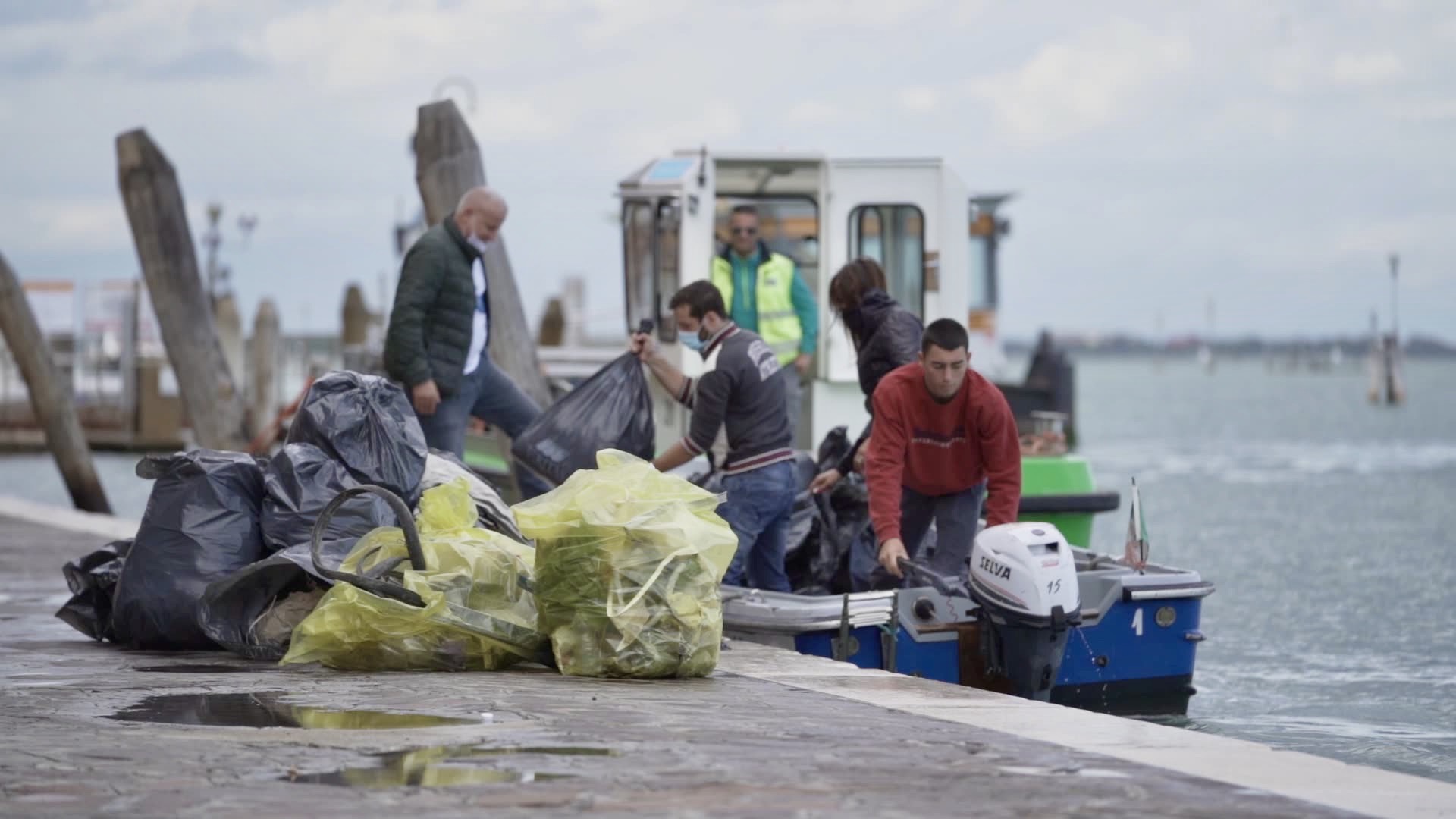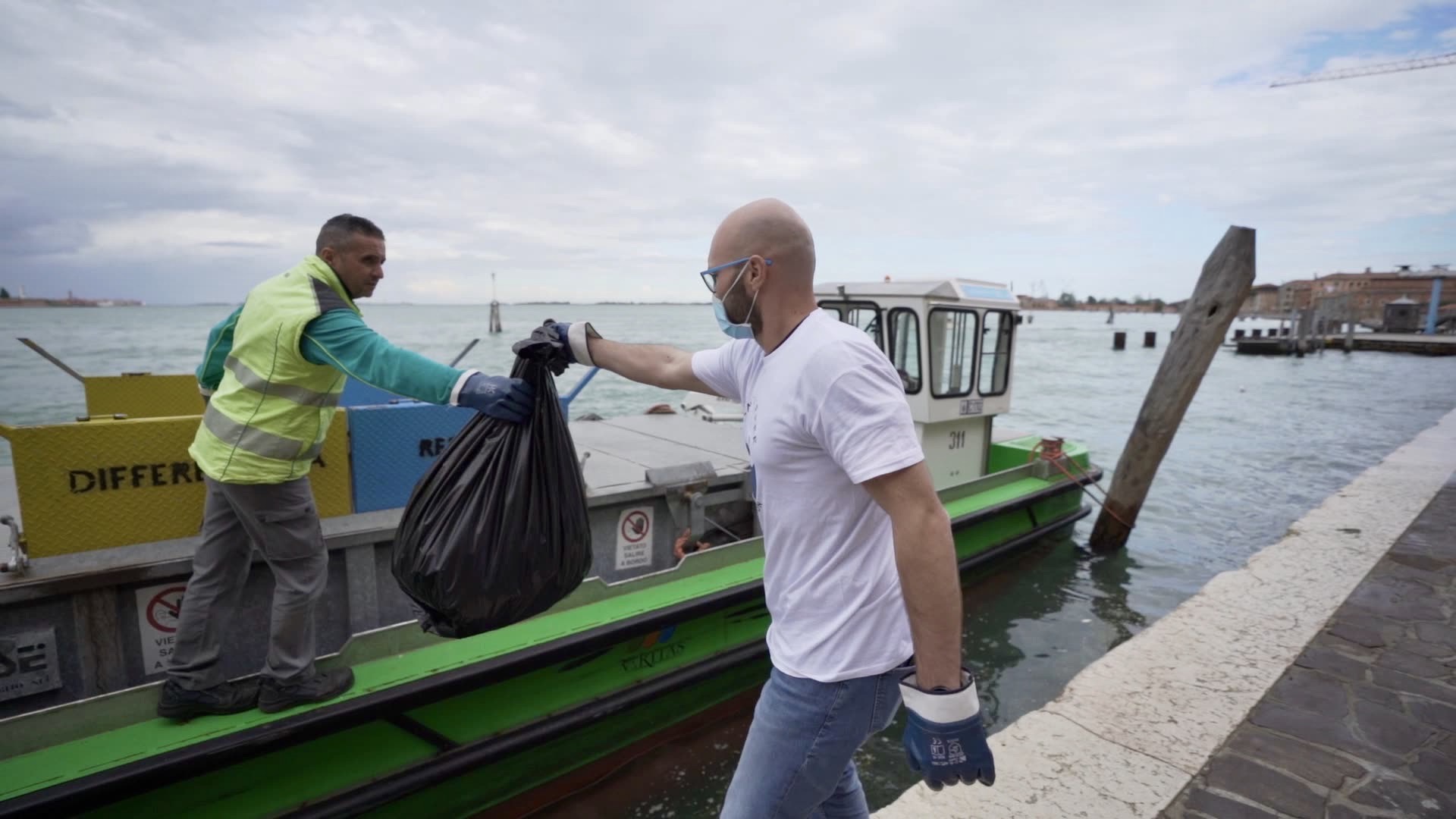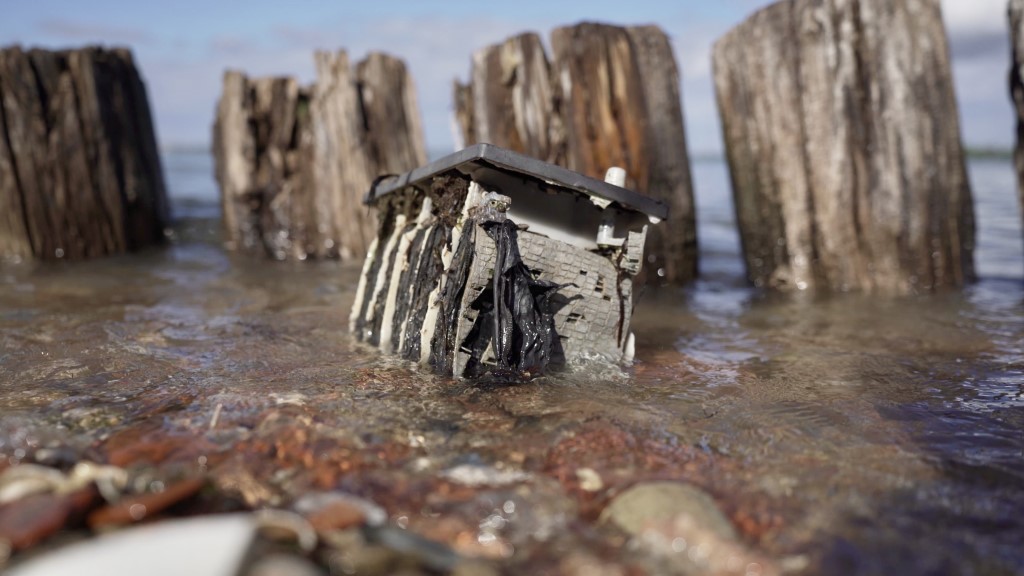Almost 3 tons (2778 kg, to be precise) of waste was collected on Sunday 4 October on the occasion of the third edition of the World Clean Up Day in Venice, albeit postponed for weather and logistics reasons. It was organized by the association Venice Lagoon Plastic Free in close collaboration with more than 30 other organizations, from the historic centre to the islands and the lagoon estuaries, to the mainland, Mestre, Marghera and Chioggia. A very extensive clean-up action, supported by the Municipality of Venice, saw the participation of citizens, residents, tourists, voluntary civil protection groups, extended communities and businesses sensitive to the difficult question of marine litter. A day painted by the sun spent removing what pollutes our heritage.
Floating and buried waste, for who knows how long, have invaded our waters and our lands, contaminating the environment and the biodiversity that populates it. “What you feel when approaching these initiatives is devastating on one hand, and healing on the other” – say the participants. “You come out sad because what you can remove is less than what you still leave there, and happy, at the same time, for having contributed at least a little bit to the restoration of a piece of nature.” The contrasting emotions of such a day are enhanced by the energy of these places, by the beauty that is their mother – the one that makes us feel that we are part of it, the one that stimulates us and teaches an amiable sense of responsibility which awakens consciousness by caressing the soul with its wonders.

A worldwide wave
Born in Estonia in 2008 with 50,000 participants who cleaned up the country in 5 days, World Clean Up Day is today the largest positive civic action the world has ever seen. In 2019 it reached 21 million people in 180 countries, contemplating on 100,000 tons of waste collected. A powerful “green wave” built by hundreds of millions of people engaged in shared cleaning actions, all on the same day, all over the world.
The waste emergency, and in particular of the marine litter, together with climate change and the loss of biodiversity, represents one of the three greatest epochal challenges that we must face globally, through shared action and without borders. A challenge that in Venice reaches even more important dimensions, in consideration of the monitoring carried out by Legambiente since 2015, and the most recent one by Venice Lagoon Plastic Free in August. Preliminary data indicates that the density of plastic in the lagoon and in the Lido coast is five times higher than the other areas of the Adriatic, identified as being among the most polluted in the Mediterranean by micro and macro-plastics.
When it comes to the heritage of humanity at risk, the message automatically acquires a very strong universal value that allows us to recognize ourselves as part of a single-family and to act driven by a common tension that goes beyond the usual cultural, religious, social and political differences. It is a message of universality and international inspiration, which Venice Lagoon Plastic Free intends to spread by creating common spaces accessible to all public and private actors, associations, scientific and research bodies. The goal is to deepen and raise awareness on the impact of plastic waste in the environment and on the solutions that can be implemented within a wider context of sustainability applied to the economy, natural and cultural resources and common goods within the World Heritage Site of Venice and its Lagoon.
Scientific support
The clean-up was preceded on 3 October by a scientific and informative seminar aimed at raising awareness on the problem linked to the pervasive presence of marine litter. The initiative, held in the garden of the Hotel Saturnia & International in Venice and organized by Venice Lagoon Plastic Free jointly with the CNR ISMAR, coordinator of the European project marGnet, with the support of the Venetian Hoteliers Association AVA and with the contribution and participation of VERITAS, counted on the presence of numerous local and national associations and private businesses, sensitive to the sustainable development of the Venetian territory.

The seminar opened with the honourable greetings by Alessia Rotta, President of the Environmental Commission in the Chamber, who reminded us that, of 208 billion euros that Italy will receive from the Recovery Fund, 37% must be allocated to infrastructures for the environment, support for virtuous companies or companies that aim to increase the sustainability of their production processes and supply chains, the ecological transition with a specific look at the circular economy and the strengthening of actions to combat climate change. An initial message of hope that opens up to hot topics on the extent of waste in Venice, collected in studies conducted by CNR ISMAR and by monitoring and analysis conducted by Venice Lagoon Plastic Free in collaboration with the Montani Technical and Technological Institute of Fermo.
Ample space was reserved for the presentation of possible solutions, which involve the use of new technologies for the mapping and removal of these materials and an innovative pyrolysis process with a portable device for the production of marine fuel deriving from the marine litter. CNR ISMAR, aims to become a European reference point for scientific and technological research in the field of monitoring, removal and recycling of plastic from the seabed and, in particular, in the area of the Venice Lagoon and the North Adriatic in support of sustainable management of the environment, proposing new solutions for a circular economy at a local level which can have a global significance.
The clean-up day of 4 October, through the preparation of intervention areas, meeting and delivery points in coordination and close collaboration with VERITAS, mobilized in a decentralized manner about thirty associations and numerous volunteers who, on foot or with their own boats have been able to translate into reality an environmental experience shared within extended communities for a responsible and inclusive citizenship. The recovered material will be disposed in accordance with the law by VERITAS and partly sent to the experimental low-temperature pyrolysis plant of SINTOL in Turin, for its refining and subsequent production of fuel for experimental purposes.
The event saw the participation of over thirty associations and private entities: Associazione Canoa Club di Mestre; Associazione Cavanisti di Mira; Associazione Dilettantistica Muranese; Associazione Veneziana Albergatori; AVPCS; Canottieri Mestre; Cantieri Biasin; Circola della Vela di Mestre; Circolo Velico Casanova Venezia; Classic Boats Venice; Comunità Islamica di Venezia e Provincia; Cooperativa Sestante di Venezia; Croce Rossa Italiana – Comitato di Venezia e Chioggia; Fare Verde; Generazione 90; Gruppo Scout AGESCI VE7; Gruppo Voga Veneta di Mestre; Gruppo volontari protezione civile di Chioggia; Jonix; Legambiente; Live Venice; Pescatori Bognolo; Plastic Free Venice Lagoon; Polo Nautico Punta San Giuliano; Poseidone; Prontopia; Row Venice; Servizi Tecnici di Venezia; Unione Sportiva Remiera Francescana; Venice Calls.
